10 /10 1 Votes10
Mode(s) Single-player | 5/5 eBay Initial release date 8 March 2012 Genre Rhythm game | |||||||||||||||||||||||||||||||||
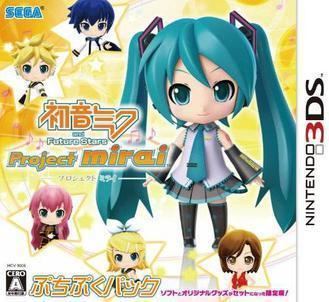 | ||||||||||||||||||||||||||||||||||
Similar Hatsune Miku: Project Mi, Hatsune Miku: Project DI, Hatsune Miku: Project DI, Hatsune Miku: Project Di, Hatsune Miku: Project DI | ||||||||||||||||||||||||||||||||||
Hatsune Miku and Future Stars: Project Mirai is a 2012 rhythm game created by Sega and Crypton Future Media for the Nintendo 3DS. The game is a spin-off of the Hatsune Miku: Project DIVA series of Vocaloid rhythm games and was first released on March 8, 2012 in Japan with no international release. Like the original the game primarily makes use of Vocaloids, a series of singing synthesizer software, and the songs created using these vocaloids most notably the virtual-diva Vocaloid Hatsune Miku. It is also the first Project Diva/Mirai game to include a Vocaloid made by Internet Co., Ltd. and the mascot Gumi appeared as a guest star.
Contents
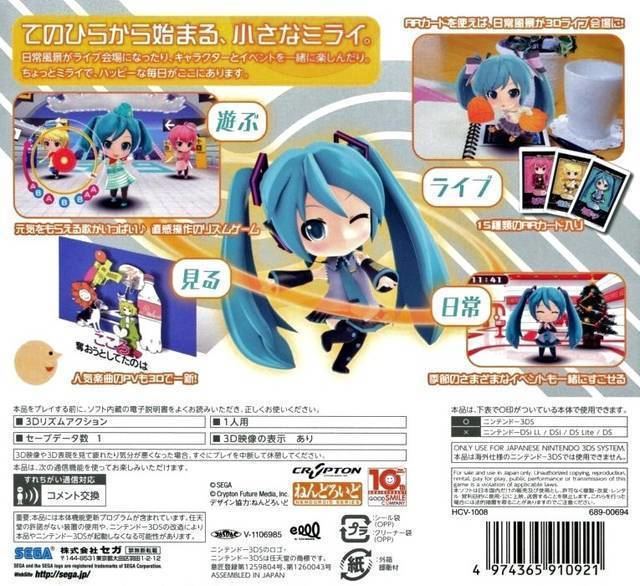
On July 2, 2014 it was announced that a new version of the game, titled Hatsune Miku: Project Mirai DX was in development for a 2015 release. On September 8, 2015, Hatsune Miku: Project Mirai DX, was released in North America.
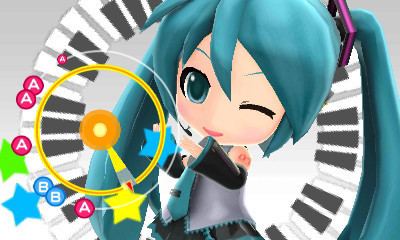
A sequel to the game, titled Hatsune Miku: Project Mirai 2, was released on November 28, 2013.
Gameplay
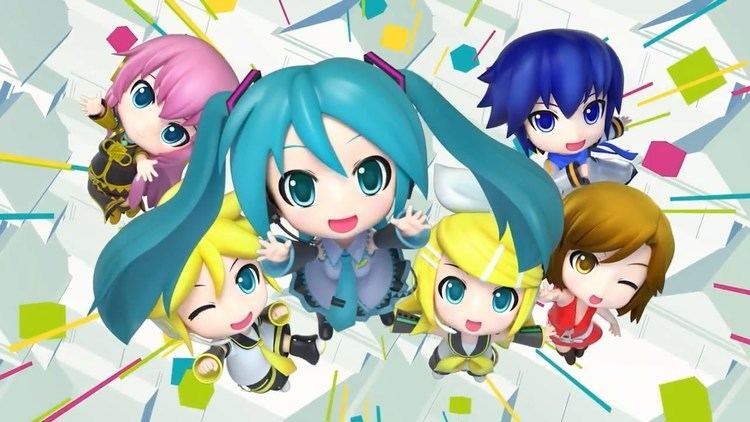
As the game is a spin-off from the Project DIVA series, there are numerous differences between the game and the original series. Most prominent of which is the art style of the game as characters appear as their Nendoroid-style, Super deformed versions in which characters have heads that are three times the normal size and not proportionate to the body. Though the game is still a rhythm game, the way the gameplay mechanics work is entirely different. In addition the game does not feature the Edit Mode of the Project DIVA series, while the DIVA Room Mode is replaced by the game's My Room mode whereby players similarly get to interact with their modules in a room. The game includes an Augmented reality mode, where the characters will appear on AR cards viewed with the Nintendo 3DS camera.
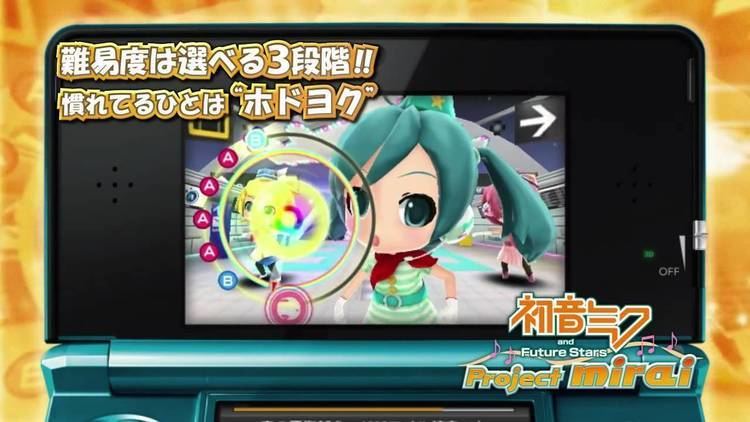
For the game's primary gameplay, its music mode, it uses what it calls the "Chance Circle System". Buttons will appear around the border of a circle, and a pointer will appear from the center of the circle extending all the way outside the circle's border. It will then turn in a clockwise or counter-clockwise manner according to the song and when the pointer passes the button, the player has to press the face button on the 3DS. Similar to the series, the player's time accuracy will also be rated on a similar scale and manner that will be displayed on the bottom of the screen. The music videos of the songs in-game are partly animations of the characters like in the previous games, but some songs include the original music video with additional 3D effects. As opposed to the previous games, changing the character will also change the voice in the song in some cases. A few songs also have a change in the lyrics when sung by a different character.
Development
Development of the game began in mid-2010 and was only officially announced on September 2011 as Hatsune Miku -Project Mirai-. On November 2011, Famitsu unveiled the game's final name Hatsune Miku and Future Stars: Project Mirai with Mirai meaning future, this marks the first time a game in the series has changed its working name for the final release. Along with its release date of March 8, 2012 and a limited edition that included a Nendoroid Puchi figure.
Song List
There are 21 songs (37 if you count different singers).
19 (34) songs are brand new to the series while 2 are from older games.
